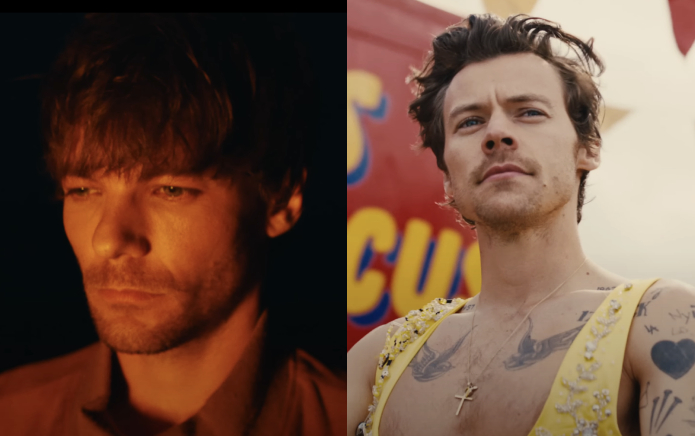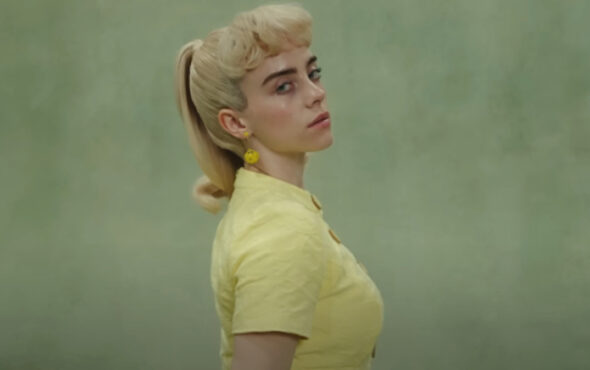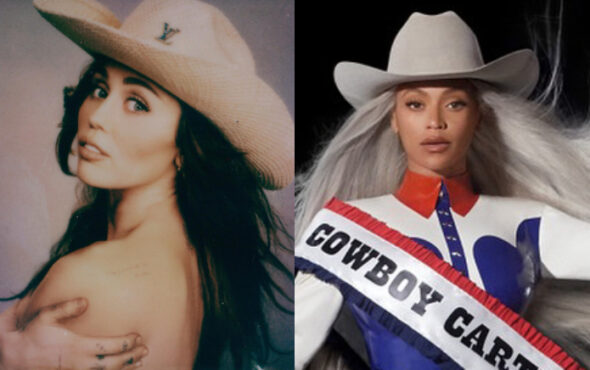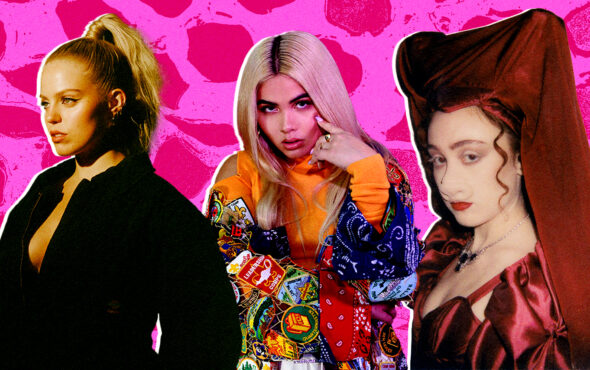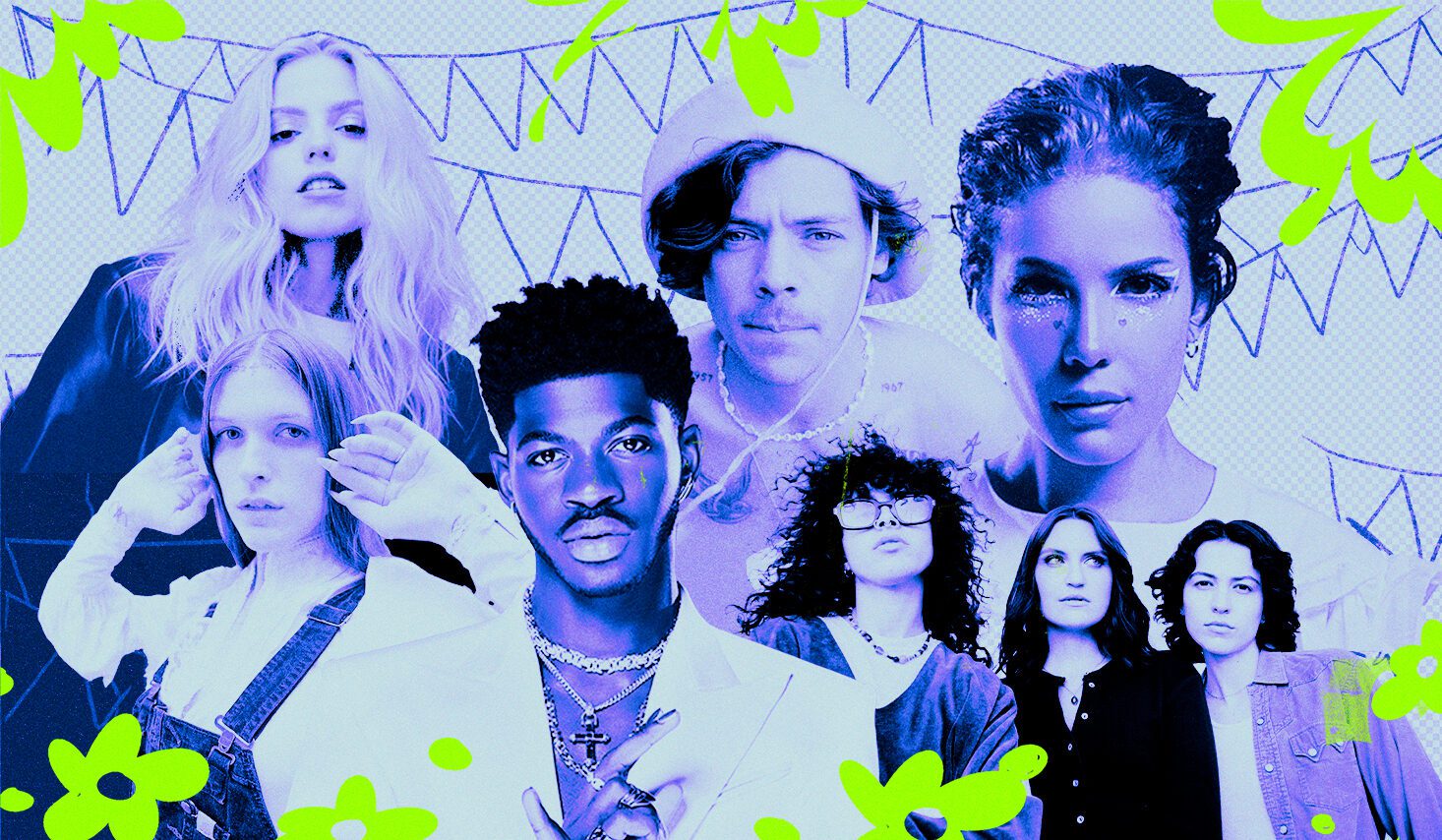
It was early January when the Reneé Rapp effect hit London. A newcomer to the music scene, the actor-turned-musician amassed a ride-or-die cult following seemingly overnight. Taking to the stage at her triple-upgraded show, the community Rapp had fashioned was self-evident. Interacting with fans on a first-name basis to exchanging jokes with the front row, the 22-year-old was doing something innovative – she was bringing her fandom from behind their screens and into shows.
The stigma of (queer) teenage fandom – the artist worshipping, endless screaming and all-out commitment – is a meagre attempt at swatting aside the agency and legitimacy brought on by young, die-hard listeners. An artist’s announcement of music news – an upcoming album cycle, a new single or a tour – is a bellwether to their excitable fan following. Pop has, often, been smeared with a stamp of convention; a standpoint of insincerity and a jangle of repetitive tunes. But, as writers Hanif Kureishi and Jon Savage wrote in The Faber Book of Pop; “Pop was made for the moment” — and artists, like Rapp, are rendering a world we can all relate to and, in part, understand.
The queer fandom musical milieu continues to be motivated by the intimate, minted experiences passed around online and in person. The prejudices geared towards queer fanbases – and their favourite contemporary artists – have more recently begun to fall away. The general queer pop-meets-alternative consensus has shifted into something bigger and freer. Today, the simulacra of queer music has become a sphere of glamour and charismatic creatives that are able to evoke something different which, at some point, another artist hasn’t quite been able to master. Whether they’re breaking pop’s archetype image expectations or reclaiming the androgenetic markers that secured the success of Prince and Elvis Presley, queer artists are becoming painters of a new wave of pop and alternative genres.
Artists such as Lil Nas X, Halsey, and Miley Cyrus channel their non-conformist characteristics of queer pop into the mainstream. Individually, they’ve cultivated something greater than a cluster of aesthetics by applying knowledge of prior American pop to their own stardom. From leaning into playful on-stage monikers (Ashley Frangipane anagrammed as Halsey, Hayden Anhedönia’s adoption of Ethel Cain or Stefani Germanotta’s infamous stage name Lady Gaga) to mucking around with gender presentation, these musicians greet us with curiosity and a willingness to test the parameters of pop music. This skewering of pop feels gently reminiscent of rock ‘n’ roll greats Bowie, Queen or the innovative Elton John – as these latter artists strove for something bolder than convention in their eclectic catalogues as they kept audiences guessing what would come next. While not every artist will be able to transform the music scene like Ziggy Stardust, there’s still something to be said about the fandom network many newer artists, and their followings, are helping to build.
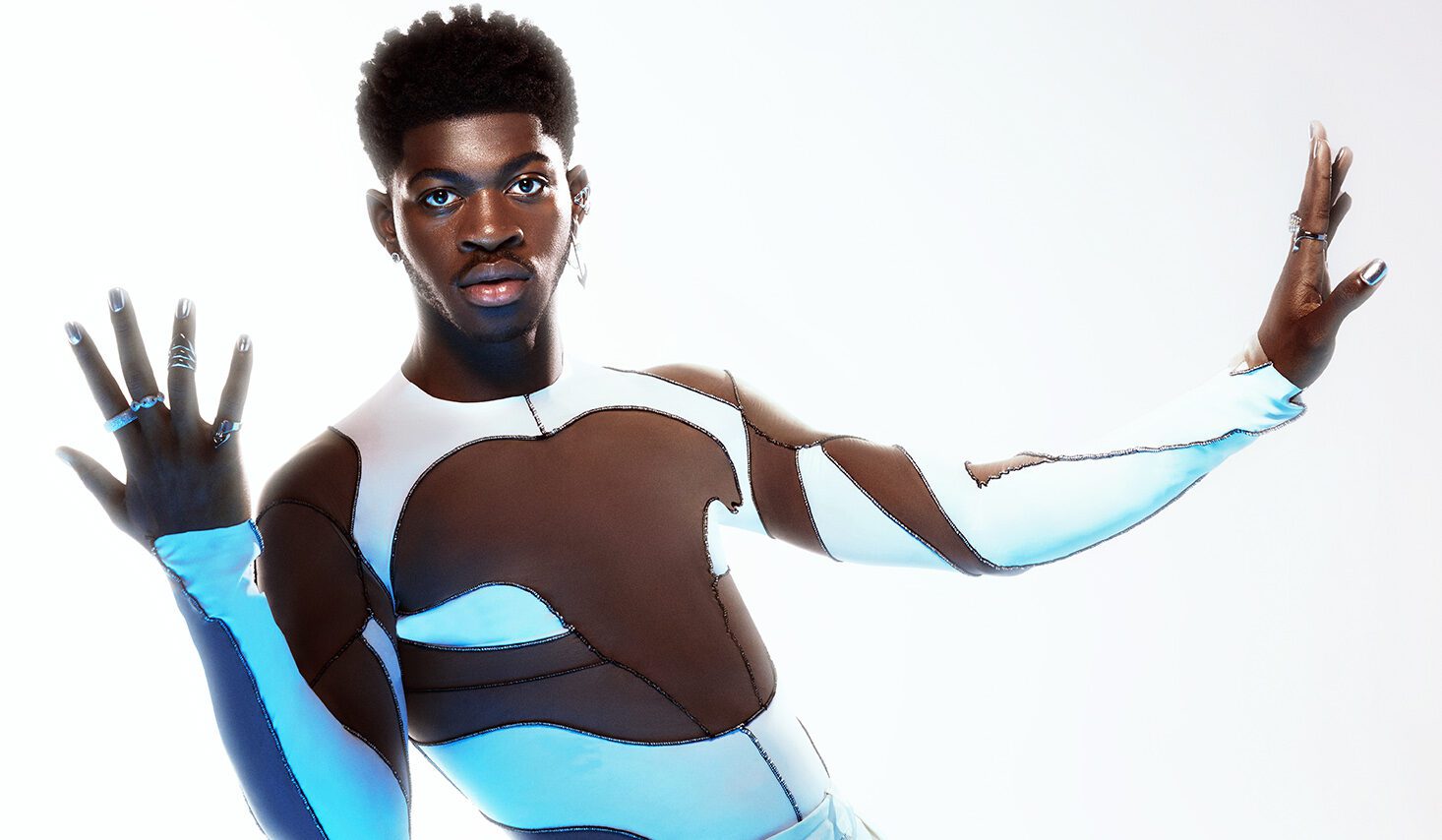
Hayley Albrecht, 23, from Minnesota has been a Halsey and Kehlani fan since she was 15. Whether it was connecting with the moments of outspoken sexuality or finding a common community, Albrecht found recognition in the artists and the music around her. “I think we can all agree there has been a lack of representation in the music industry for queer fans in the past. I believe that having this pipeline of fans that spans the fandoms of queer artists is so important,” she explains.
For Albrecht, this “long search” for representation was made easier by attending a roster of shows where queer artists would support one another. “There’s no better way than to discover more artists that fit the bill through the artists you currently know. I attended Fletcher’s Girl Of My Dreams tour this past November and Chappell Roan opened for her. I think that’s another really cool way to connect fan bases and bring recognition to other queer artists that maybe some of her fans were not familiar with. I discovered Reneé Rapp through mutual fans I knew of Halsey and Fletcher.”
The emergence of queer artists often relies on the support of fellow LGBTQ+ artists or allies. Queer pop titans MUNA emerged as critically successful stars following their About U debut in 2017 but hit the mainstream after supporting slots with Harry Styles in the same year and, later, with Taylor Swift on the Eras Tour. And, similarly, we’ve seen Fletcher share stages with Miley Cyrus to Hayley Kiyoko, broadening her audience while she’s at it. As LGBTQ+ artists (and adjacent) continue to prop one another up, they continue to build out a spider web catching fans of all genres and styles. The crux of this fandom framework could be dismissed as nothing more than a coincidental overlap of listeners, but it would be short-sighted to do so. When it comes to community and queerness, you’ll find fan bases, like music hubs, congregate with intention.
Growing up in Toronto, KJ, 19, became a part of the Reneé Rapp fandom online. As the teenager followed Rapp’s career, she identified with the singer’s discovery of queerness. “[She] encouraged me to embrace and express my own identity more openly. I’ve also had the opportunity to connect with her welcoming and authentic fan base and make new friends within the queer community,” they share. The connections built between audience and queer artists aren’t just online but are making their way into live environments too.
Fans like KJ are commending artists, such as Lil Nas X and Reneé Rapp, for creating “extremely safe and comforting” spaces for fans to become the “truest version” of themselves. “Through my connections with other members of Reneé’s fan base online, coming out as queer was a normal and accepted experience rather than a struggle or discomfort,” KJ says. “This is why attending her shows in person feels so comfortable; I know that I am surrounded by people who not only accept me for who I am but [they] also share similar queer experiences.”
For Rolling Stone journalist Tomás Mier, 24, fandom and fan communities have become an integral part of the queer experience. “It’s a community that you’re able to build with other people who you connect with on [an artist] thing that you like and that [artist] sometimes overlaps with other parts of your identity,” he explains. “Being queer is what makes these relationships so unique – that’s a really big factor in what makes fandom such an important part of online communities.”
Music for many listeners is a meeting point; a space of connection and convention. As a pop fan, Mier found his people within the Fifth Harmony stan community online before coming out of the closet. He cites the fandom network as a “phenomenon” specific to queer artists who are able to build these resilient connections with their fanbase. “We are very protective of other people like us and there’s already this parasocial relationship with celebrities overall but when there’s an added layer of relatability, or personal connection, that relationship becomes a lot stronger,” Mier explains.
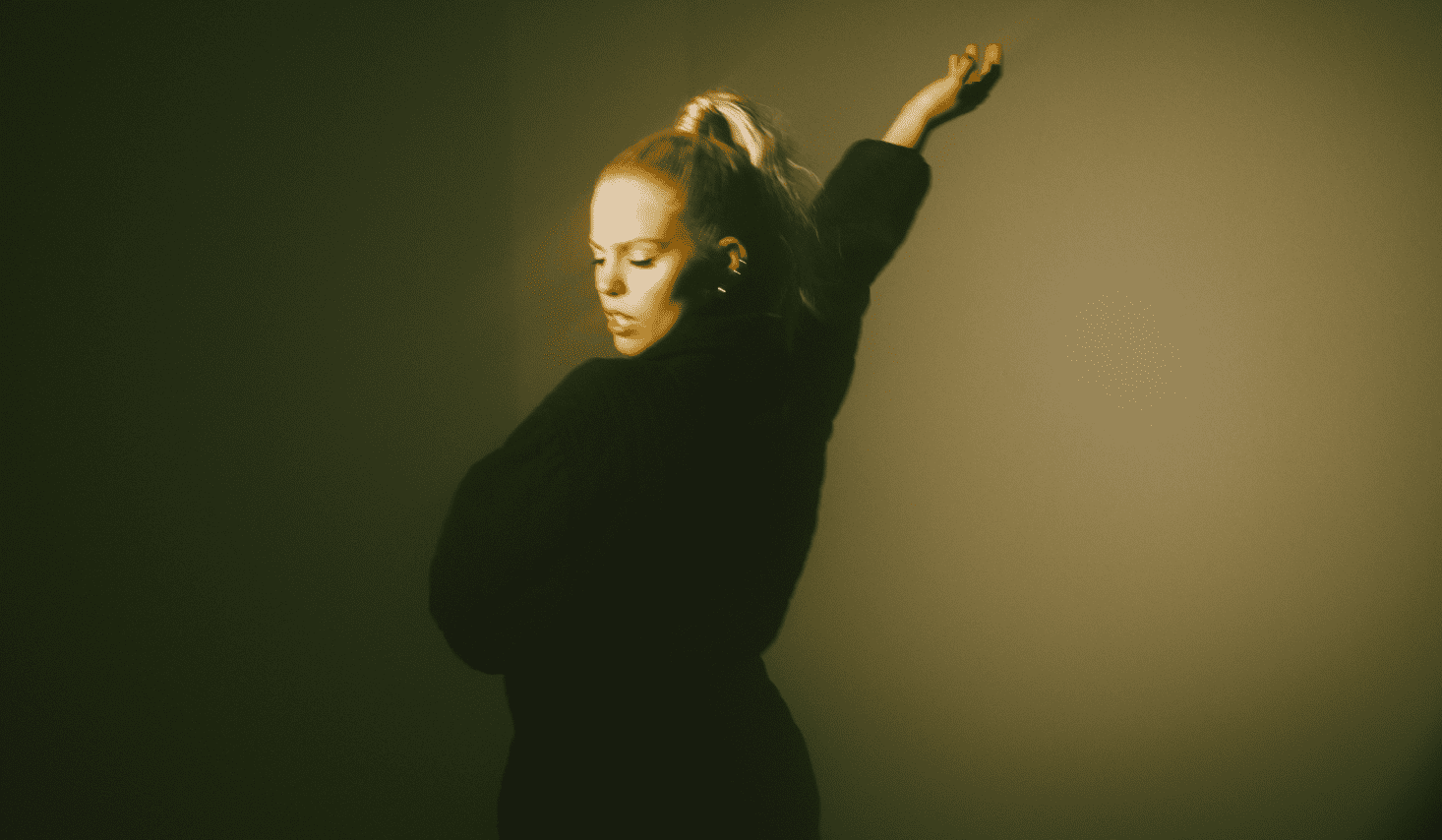
The legitimacy and power of queer fandom, Mier says, can be attributed to their committedness to artists they see themselves in. “What makes Reneé Rapp so special is that she’s one of us so therefore you want to back her up. I’m sure a lot of queer women see themselves in her,” he tells GAY TIMES. “For a lot of gay men, it was like the unattainable unreachable popstar like Lady Gaga or Katy Perry. Now, it’s the Reneé Rapp’s – MUNA would be another good example, and Fletcher.”
In a way that straight male artists may distance themselves from largely female audiences, the credibility of queer fanbases has never been one that’s been undermined. Often we see attempts at de-legitimising a woman’s enjoyment of music. The term ‘fangirl’ alone has become loaded and rooted in sexism. But, with queer fanbases, there has been less disenfranchisement. Crowds of queer female fans are not a dent in your credibility as an artist. Instead, whether you’re at a Charli XCX show or jamming out to Steve Lacy, there’s a moving sense of unity.
This growing community camaraderie is bigger than labels, and the industry itself can anticipate. While it’s no Beatlemania, the exchange of technology and fandom spirit has been able to direct the path of unsigned talent. “Fandoms are the driving force behind a lot of these artists having lengthy careers,” Mier says. “In the age of TikTok, [artists] do not need a label to find a fan base or a big group of fans. As time goes on, the Ethel Cain’s of the world are able to build communities without needing to be backed up by a big label.”
Alex Simpson, Festival Manager at Live Nation Canada, has watched the queer fandom movement race forward in recent years. The founder of Canada’s newly launched one-day music festival Lavender Wild, Simpson was eager to establish a space where LGBTQ+ people could safely gather and support queer talent. “Many 2SLGBTQ+ people have connected online but are now looking to create friendships, partnerships, and their own community in real life. Queer spaces are so important because they provide a safe and accepting environment for our community to come together and celebrate our identities,” she tells GAY TIMES.
With Lavender Wild and Live Nation, Simpson wanted to create an event which allowed artists and fans to be truly seen. “I started to ask myself why there wasn’t something like this on a larger scale within the music space. I wanted to create a safe space for our community that was combined with the artists who represent us every day on stages across the world and thus, Lavender Wild was born.”
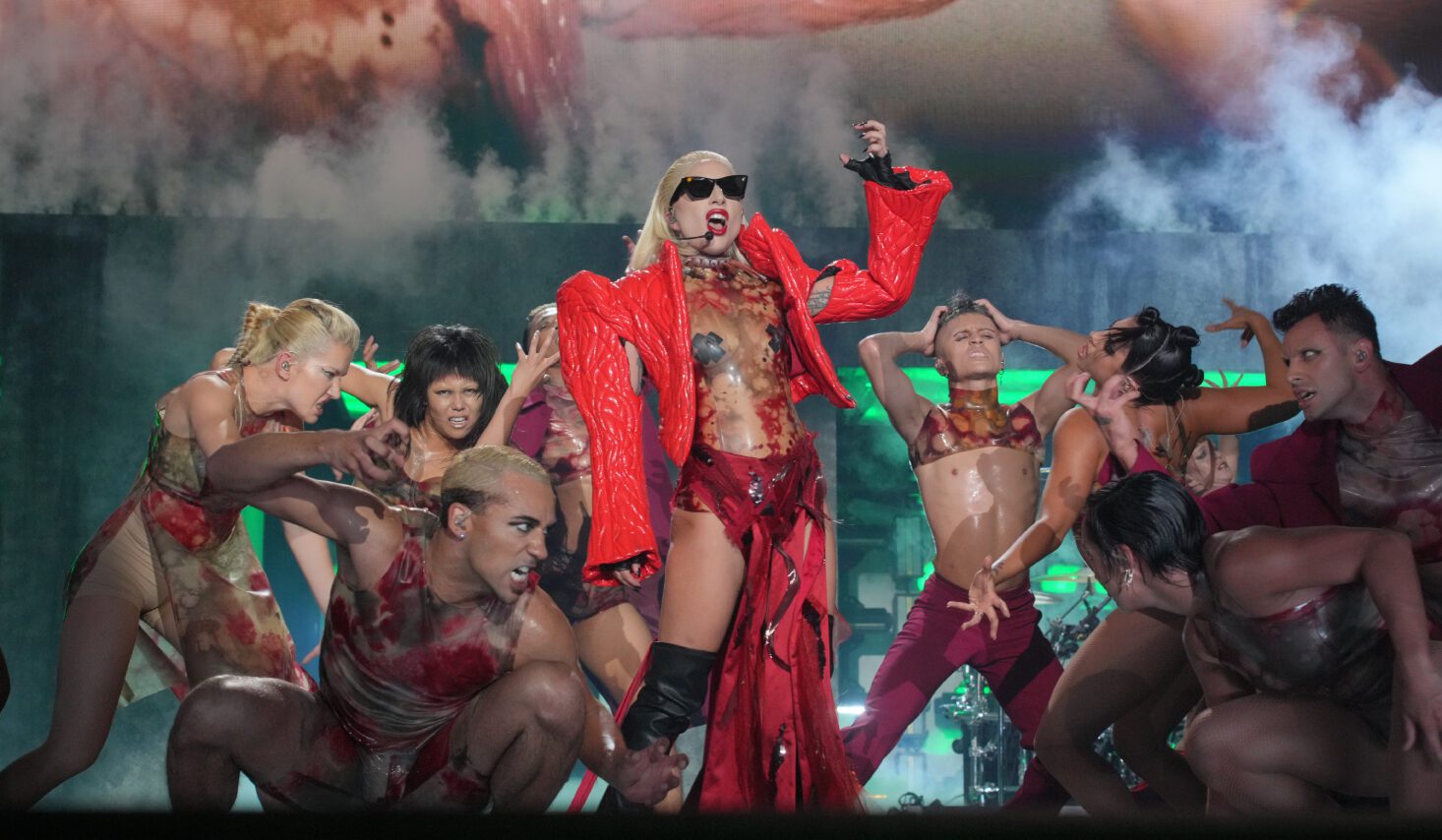
The intersection of fandom and industry has never been so direct. Makayla M, 19, from New York City, runs a multi-fan account for her favourite artists. From Sabrina Carpenter and Gracie Abrams to Taylor Swift and Kehlani, M enjoys watching fans rally together over new releases and put together campaigns to get their favourite talent in the charts. “When I find out an artist I like is queer it just changes everything. I automatically want to support them more. I tend to post about them on the same account and [we] interact with other people in those fandoms from the same place,” she says. “It’s fun on release and award show nights – we all come together online to watch and share our reactions. Swifties all came together to watch live streams of Taylor’s first night of the Eras Tour – I had the time of my life literally from my bedroom!”
The newer waves of the fandom network, however, couldn’t necessarily exist without the originals. As Official Charts journalist George Griffiths puts it, pop music often equates to the establishment of a queer fanbase. “You can see it from the foundation of social media, where you had Lady Gaga, Katy Perry, and Nicki Minaj — those are, in my eyes, the three pillars of what we know as fandom today, and how it operates,” he says. The ongoing queer network today, for Griffiths, is a continuation of the fandom communities that laid down the groundwork. “Those stans were made up of queer kids, almost front to back. While I don’t think what we’re seeing now is unique, what we are seeing is artists, like you mentioned, becoming more open and authentic about their sexualities and queerness, which obviously means that most of their fans will be queer too.”
Take Lil Nas X and his online community of fans. Since breaking onto the scene in 2019, the rapper has continued to dominate the airwaves and established a record-breaking (and culture-changing) discography. But that, in part, wouldn’t be possible without his mighty fanbase. With 12 million followers on Instagram and 8 million on Twitter, Lil Nas X’s maintained successful momentum temporarily snagging the title of longest-running No. 1 song in history for Old Town Road and has since challenged what rap and country music can sound like.
As this extension of fandom continues, Griffiths notes how these music communities create a new fan-dominated culture as they develop. “What’s fascinating to me is that to live inside a fandom as these people do, you need to learn a different culture. You need to learn a different language,” he explains. “The way fans interact with each other and other fans online is its own thing entirely, separate from the outside world. The one big learning thing at the beginning of stan culture was seeing how much of a positive impact it could have on artists’ careers – One Direction only broke the US because of their fan base there, they showed there was strength in numbers.”
Veer Misra, 26, from Delhi, has long supported Rapp, Swift and Lil Nas X for what they are able to bring to the queer community. “We all pick and choose different moments from the art that apply to our individual queerness and I believe there’s this innate need to connect over that queerness,” he says. By posting online, Misra has been able to share his vulnerability knowing that queer “people will understand” him and his relationship with his favourite artists. “It’s the best way I know how to articulate my queerness because those lyrics describe how I feel better than I ever could.”
The future of queer fandom can’t be predicted but, for now, it’s never been stronger. In recent months I’ve spent my time weaving in and out of queer crowds to watch Ethel Cain, head bobbing to Reneé Rapp and dancing in rows of fans to Lil Nas X. Fandoms have an unmistakable familiarity, whether in London or Roskilde. There’s no ticking clock on when and where you’ll experience the euphoria of a queer music connection. But, it’s life-changing when you do. Queer fandom networks are something that will continue to grow and change generationally. So, as fans continue to share their stories, show up at live shows and create their endless slew of fan accounts – the fierce celebration of queer fandom is going to roll on.
